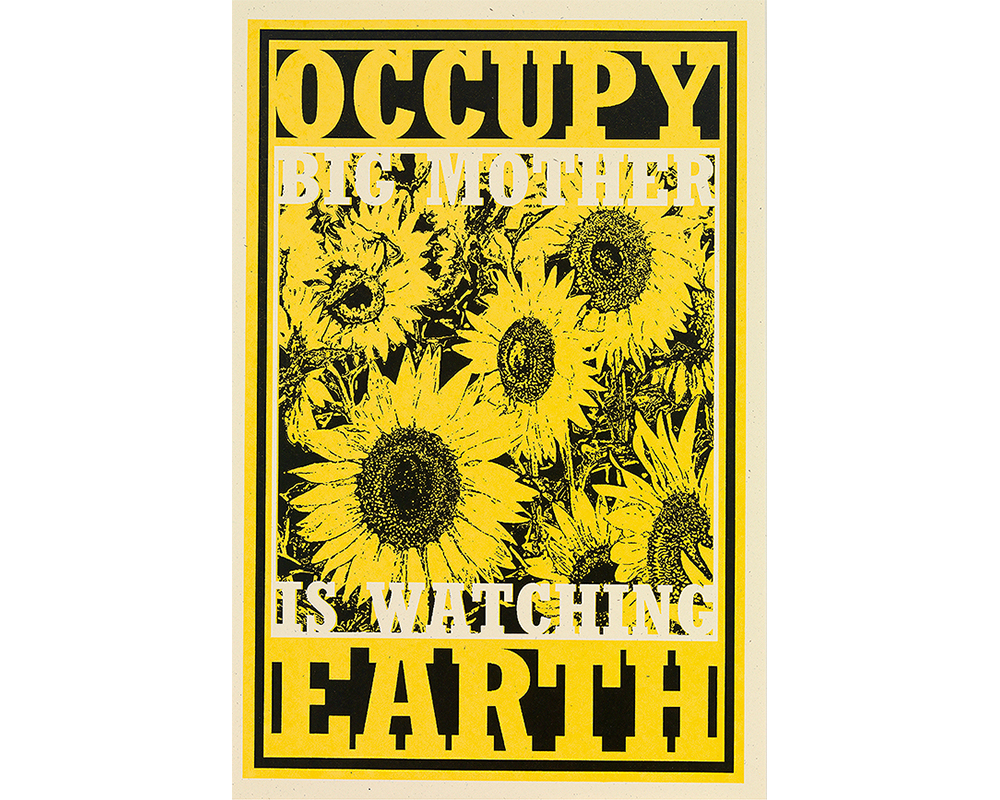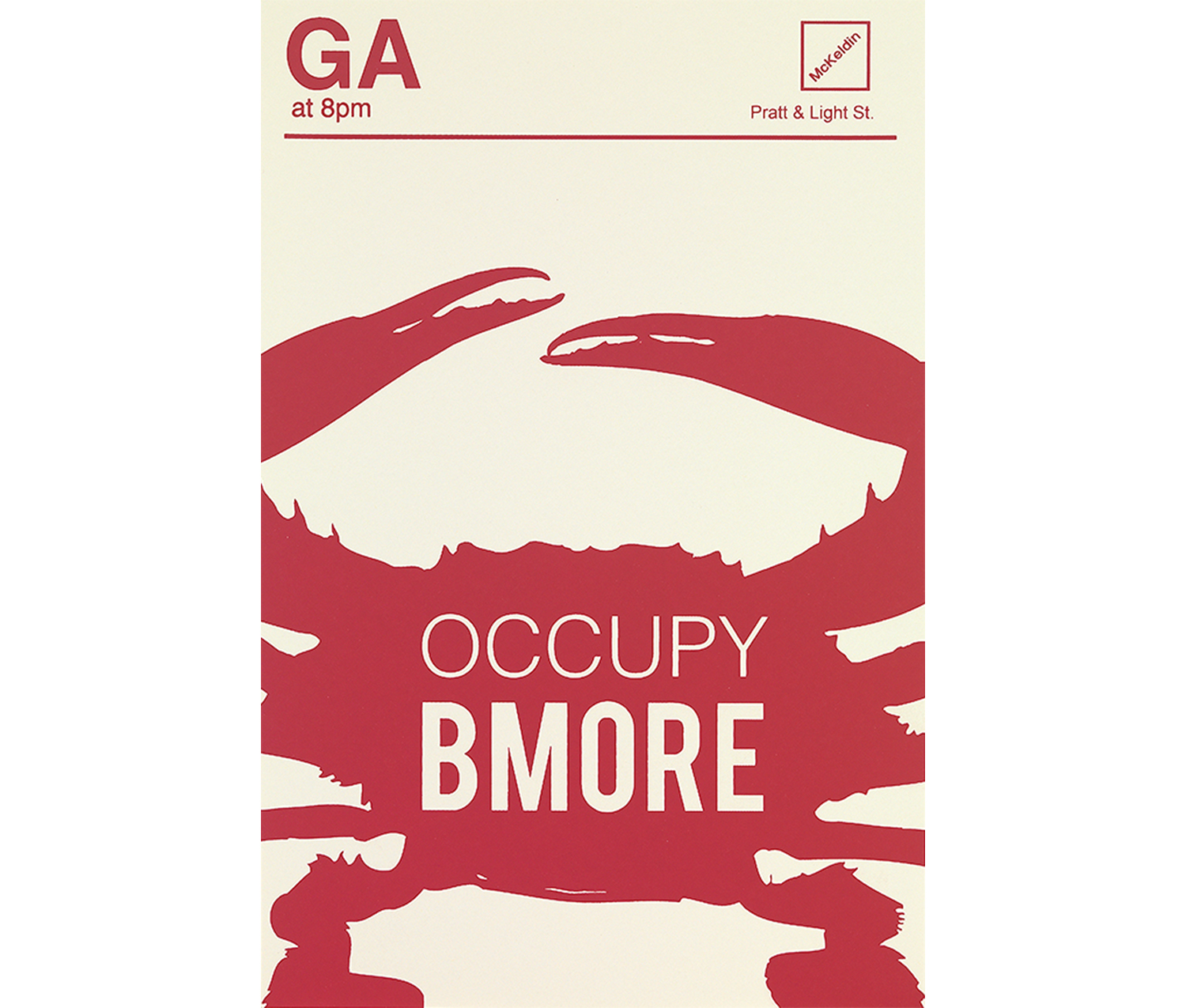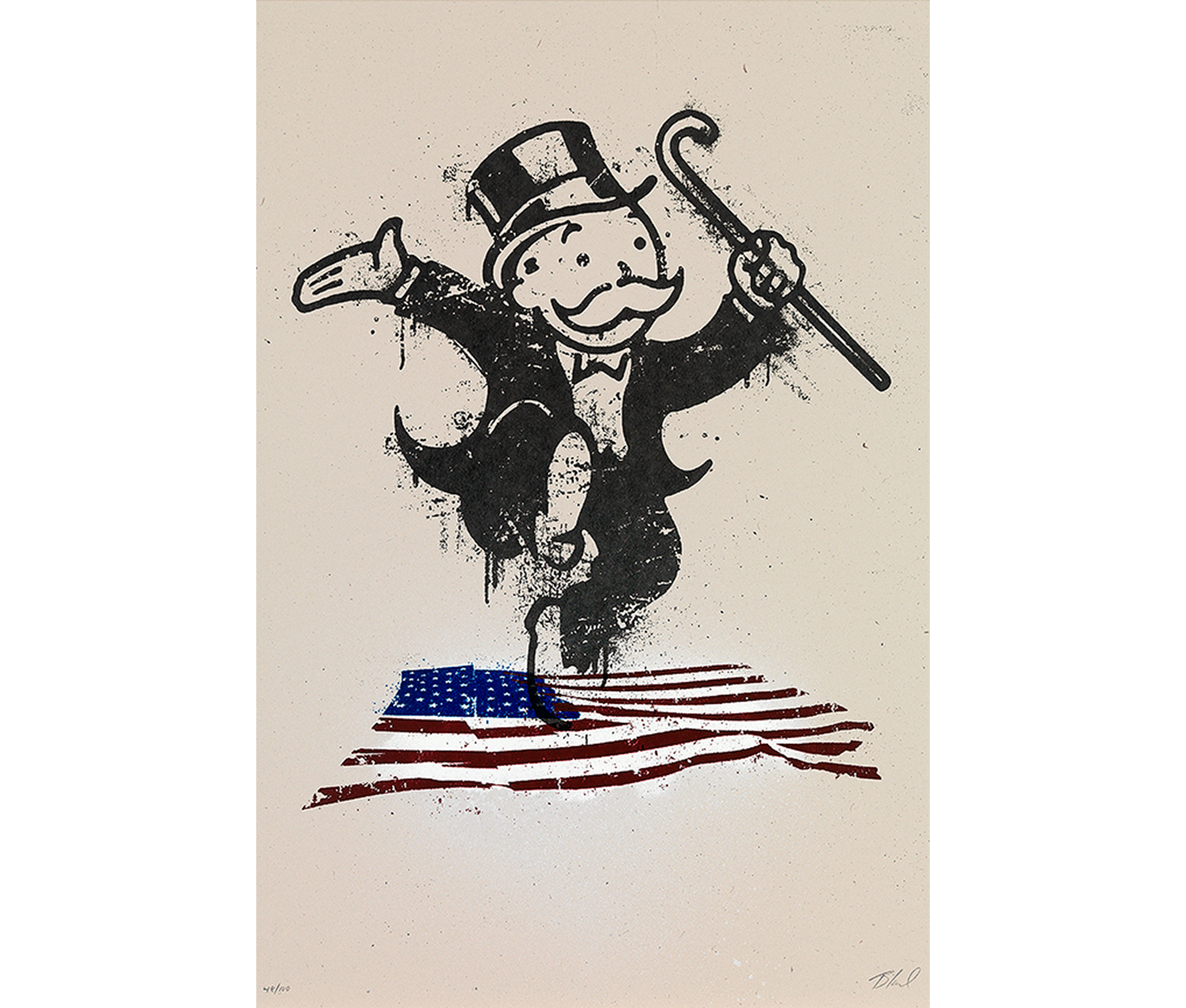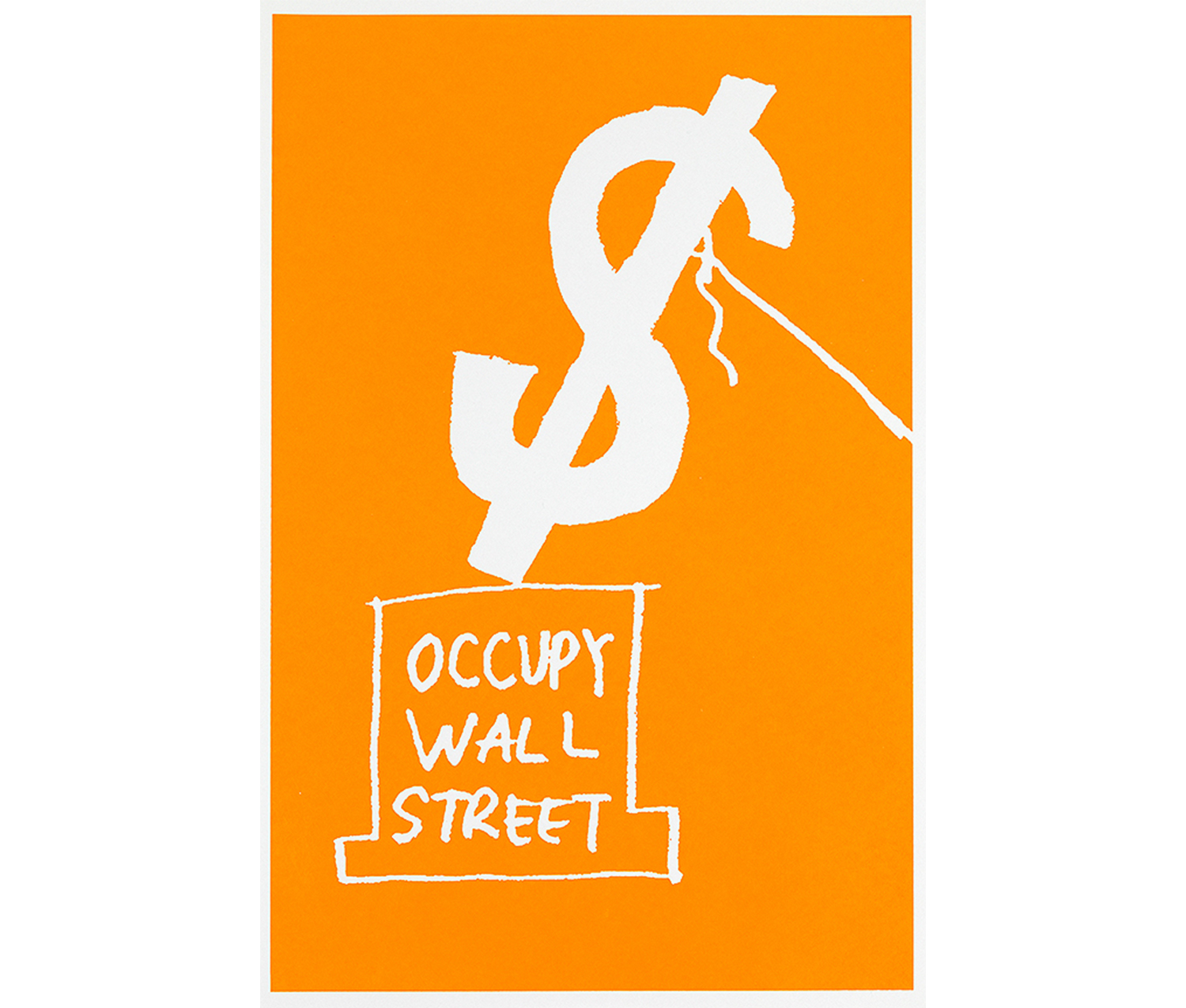
Visual Occupation
Guest blogger Petru Bester is a Smith College student, class of 2015, majoring in Art History and minoring in Anthropology. She is a Student Assistant in the Cunningham Center for Prints, Drawings, and Photographs.
On September 17, 2011, protesters famously started their occupation of New York City’s Zuccotti Park as a part of the Occupy Wall Street Movement, born in the wake of the Arab Spring and the Spanish Indignants. This impulsive, spontaneous movement took the country by storm and by October 2011, 95 cities across 82 countries experienced “#Occupy” protesting. In the United States alone there were over 600 communities involved with the movement. By October 2012 every continent except Antarctica found itself in the thrashes of a now organized and united democratic occupation.
Over the years the organization has transitioned from purely physical activism to activism through word and image. Understanding the growing power of prints and social media, Occupy participants across the world have adopted poster-making as their main networking strategy. Occupy print labs have popped up everywhere under a single name: #Occuprint. These labs produce prints that contest violence, display solidarity, and inform viewers. Many print lab posters are made specifically for and distributed to educational institutions like the Smith College Museum of Art, who has recently acquired an Occuprint portfolio.
The movement is involved in everything from Storm Sandy recovery to wage inequality and corporate personhood. Like the Occupy movement itself, the posters created are diverse in subject but similar in style. The prints often employ iconographic images to recall memories and the feelings associated with those memories in contemporary viewers. By doing so, these artists are able to create something more than a print. One such print by Marx Aviano is all-encompassing and advocates for all #Occupy causes. Occupy Earth, Big Mother is Watching encourages any and every viewer to occupy the Earth. This idea is by no means revolutionary. The human occupation of Earth has been ongoing for thousands of years. The poster, however, asks the viewer to think what true occupation in modern contexts should look like.
The phrase, “Big Mother is watching” personifies the Earth. As a mother would she be proud of the way we live, use, and treat her? Would she find how we treat each other acceptable? Or would we be put into a “time-out”? A life time of memories floods my mind from the occasional time-out as a child and my relationship with my own mother, to my various history and anthropology classes, to my rare moments of personal protesting and occupation.
The print, no doubt, also is in reference to George Orwell’s novel Nineteen Eighty-Four, the satirical book portraying a tyrant called “Big Brother”. The people under his control are subject to constant surveillance. In this respect the phrase “Big Mother” emits an eerie sensation of observation and alludes to the oppression felt in both the book and by contemporary occupiers.

Keith Lowe. American, 20th century. Occupy BMORE, from Occuprint portfolio, 2012. Screenprint in color on paper; cream, thick, smooth paper. Purchased with the Katherine S. Pearce, class of 1915, Fund. Photography by Petegorsky/Gipe. SC 2012.30.18.
Some posters like Occupy BMORE act on a sense of community and pride of place. Keith Lowe’s print is commercial and brands the movement in Baltimore through a well-known local: the crab. The visual language is simple and easily understood.
Many of these prints embody specific ideology behind #Occupy and #Occuprint. In Untitled [Monopoly figure dancing on American flag], Brad Kayal caters to the #Occupy’s specific aim to spread the resources of the so-called “1%.” Kayal makes the viewer aware of the inequality and overt capitalism by placing the globally recognizable Monopoly man, a symbol of the 1%, dancing on top of the American flag, a symbol of the “99%.” By representing the 99% with the flag, Kaval also implies that the 99% are who really represent, compose, and sustain America.

Brad Kayal. American, 20th century. Untitled [Monopoly figure dancing on American Flag], from Occuprint portfolio, 2012. Screenprint in three colors on thick beige colored smooth paper. Purchased with the Katherine S. Pearce, class of 1915, Fund. Photography by Petegorsky/Gipe. SC 2012.30.2.
Artist Jeanne Verdoux presents the idea of social wealth through another iconic image: $ Occupy Wall Street. The tearing down of Saddam Hussein’s statue in al-Fardus Square is a scene many of us will never forget. Saddam’s statue is replaced here with America’s suppressor: money. It too is being pulled down, this time by the Occupy Wall Street Movement. The relaxed, plain composition and design of this print hides the complex and emotional message.

Jeanne Verdoux. 20th century. $ Occupy Wall Street, from Occuprint portfolio, 2012. Screenprint in color on paper; bright white, thick, smooth paper. Purchased with the Katherine S. Pearce, class of 1915, Fund. Photography by Petegorsky/Gipe. SC 2012.30.19.
No matter the message, the works by #Occuprint maintain an amalgamated aesthetic. By keeping the images relatable #Occupy is able to outwardly convey the messages of their internally unified organization. The carefully considered designs and cohesive output prevent prints from appearing too radical or obscure. This image-consciousness is an attempt to guarantee a popular display that won’t be off-putting to viewers. Within the Occuprint portfolio, a unique language has been spawned that encourages a visual occupation both in our minds and on the streets.